13 start with O start with O

The hero’s journey home from war.
Here is a new Loeb Classical Library edition of the resplendent epic tale of Odysseus’ long journey home from the Trojan War and the legendary temptations, delays, and perils he faced at every turn. Homer’s classic poem features Odysseus’ encounters with the beautiful nymph Calypso; the queenly but wily Circe; the Lotus-eaters, who fed his men their memory-stealing drug; the man-eating, one-eyed Cyclops; the Laestrygonian giants; the souls of the dead in Hades; the beguiling Sirens; the treacherous Scylla and Charybdis. Here, too, is the hero’s faithful wife, Penelope, weaving a shroud by day and unraveling it by night, in order to thwart the numerous suitors attempting to take Odysseus’ place.
The works attributed to Homer include the two oldest and greatest European epic poems, the Odyssey and Iliad. These texts have long stood in the Loeb Classical Library with a faithful and literate prose translation by A. T. Murray. George Dimock has brought the Loeb’s Odyssey up to date, with a rendering that retains Murray’s admirable style but is worded for today’s readers. The two-volume edition includes a new introduction, notes, and index.

The hero’s journey home from war.
Here is a new Loeb Classical Library edition of the resplendent epic tale of Odysseus’ long journey home from the Trojan War and the legendary temptations, delays, and perils he faced at every turn. Homer’s classic poem features Odysseus’ encounters with the beautiful nymph Calypso; the queenly but wily Circe; the Lotus-eaters, who fed his men their memory-stealing drug; the man-eating, one-eyed Cyclops; the Laestrygonian giants; the souls of the dead in Hades; the beguiling Sirens; the treacherous Scylla and Charybdis. Here, too, is the hero’s faithful wife, Penelope, weaving a shroud by day and unraveling it by night, in order to thwart the numerous suitors attempting to take Odysseus’ place.
The works attributed to Homer include the two oldest and greatest European epic poems, the Odyssey and Iliad. These texts have long stood in the Loeb Classical Library with a faithful and literate prose translation by A. T. Murray. George Dimock has brought the Loeb’s Odyssey up to date, with a rendering that retains Murray’s admirable style but is worded for today’s readers. The two-volume edition includes a new introduction, notes, and index.

Old Norse mythology is elusive: it is the label used to describe the religious stories of the pre-Christian North, featuring such well-known gods as Odin and Thor, yet most of the narratives have come down to us in manuscripts from the Middle Ages mainly written by Christians. Our view of the stories as they were transmitted in oral form in the pre-Christian era is obscured.
To overcome these limitations, this book assembles comparisons from a range of theoretical and analytical perspectives—across media, cultures, and disciplines. Fifteen scholars from a wide range of fields examine the similarities of and differences of the Old Norse mythologies with the myths of other cultures. The differences and similarities within the Old Norse corpus itself are examined to tease out the hidden clues to the original stories.
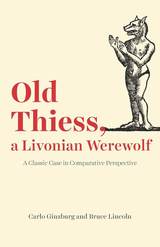
In this book, eminent scholars Carlo Ginzburg and Bruce Lincoln offer a uniquely comparative look at the trial and startling testimony of Old Thiess. They present the first English translation of the trial transcript, in which the man’s own voice can be heard, before turning to subsequent analyses of the event, which range from efforts to connect Old Thiess to shamanistic practices to the argument that he was reacting against cruel stereotypes of the “Livonian werewolf” a Germanic elite used to justify their rule over the Baltic peasantry. As Ginzburg and Lincoln debate their own and others’ perspectives, they also reflect on broader issues of historical theory, method, and politics. Part source text of the trial, part discussion of historians’ thoughts on the case, and part dialogue over the merits and perils of their different methodological approaches, Old Thiess, a Livonian Werewolf opens up fresh insight into a remarkable historical occurrence and, through it, the very discipline of history itself.
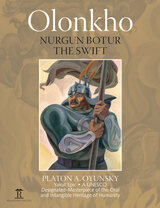

Occasionally zany zoological lore.
Aelian (Claudius Aelianus), a Roman born ca. AD 170 at Praeneste, was a pupil of the rhetorician Pausanias of Caesarea, and taught and practiced rhetoric. Expert in Attic Greek, he became a serious scholar and studied history under the patronage of the Roman empress Julia Domna. He apparently spent all his life in Italy where he died after AD 230.
Aelian’s On the Characteristics of Animals, in 17 books, is a collection of facts and beliefs concerning the habits of animals drawn from Greek authors and some personal observation. Fact, fancy, legend, stories, and gossip all play their part in a narrative that is meant to entertain. If there is any ethical motive, it is that the virtues of untaught yet reasoning animals can be a lesson to thoughtless and selfish mankind. The Loeb Classical Library edition of this work is in three volumes.
The Historical Miscellany (LCL 486) is of similar nature. In 14 books, it consists mainly of historical and biographical anecdotes and retellings of legendary events. Some of Aelian’s material is drawn from authors whose works are lost.
Aelian’s Letters—portraying the affairs and country ways of a series of fictitious writers—offer engaging vignettes of rural life. These are available in LCL 383.

Occasionally zany zoological lore.
Aelian (Claudius Aelianus), a Roman born ca. AD 170 at Praeneste, was a pupil of the rhetorician Pausanias of Caesarea, and taught and practiced rhetoric. Expert in Attic Greek, he became a serious scholar and studied history under the patronage of the Roman empress Julia Domna. He apparently spent all his life in Italy where he died after AD 230.
Aelian’s On the Characteristics of Animals, in 17 books, is a collection of facts and beliefs concerning the habits of animals drawn from Greek authors and some personal observation. Fact, fancy, legend, stories, and gossip all play their part in a narrative that is meant to entertain. If there is any ethical motive, it is that the virtues of untaught yet reasoning animals can be a lesson to thoughtless and selfish mankind. The Loeb Classical Library edition of this work is in three volumes.
The Historical Miscellany (LCL 486) is of similar nature. In 14 books, it consists mainly of historical and biographical anecdotes and retellings of legendary events. Some of Aelian’s material is drawn from authors whose works are lost.
Aelian’s Letters—portraying the affairs and country ways of a series of fictitious writers—offer engaging vignettes of rural life. These are available in LCL 383.

Occasionally zany zoological lore.
Aelian (Claudius Aelianus), a Roman born ca. AD 170 at Praeneste, was a pupil of the rhetorician Pausanias of Caesarea, and taught and practiced rhetoric. Expert in Attic Greek, he became a serious scholar and studied history under the patronage of the Roman empress Julia Domna. He apparently spent all his life in Italy where he died after AD 230.
Aelian’s On the Characteristics of Animals, in 17 books, is a collection of facts and beliefs concerning the habits of animals drawn from Greek authors and some personal observation. Fact, fancy, legend, stories, and gossip all play their part in a narrative that is meant to entertain. If there is any ethical motive, it is that the virtues of untaught yet reasoning animals can be a lesson to thoughtless and selfish mankind. The Loeb Classical Library edition of this work is in three volumes.
The Historical Miscellany (LCL 486) is of similar nature. In 14 books, it consists mainly of historical and biographical anecdotes and retellings of legendary events. Some of Aelian’s material is drawn from authors whose works are lost.
Aelian’s Letters—portraying the affairs and country ways of a series of fictitious writers—offer engaging vignettes of rural life. These are available in LCL 383.
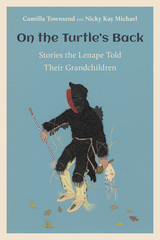
On the Turtle’s Back is the first collection of Lenape folklore, originally compiled by anthropologist M. R. Harrington over a century ago but never published until now. In it, the Delaware share their cherished tales about the world’s creation, epic heroes, and ordinary human foibles. It features stories told to Harrington by two Lenape couples, Julius and Minnie Fouts and Charles and Susan Elkhair, who sought to officially record their legends before their language and cultural traditions died out. More recent interviews with Lenape elders are also included, as their reflections on hearing these stories as children speak to the status of the tribe and its culture today. Together, they welcome you into their rich and wondrous imaginative world.
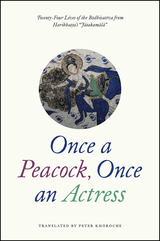
Haribhatta’s Jåtakamålå is a sophisticated and personal adaptation of popular stories, mostly non-Buddhist in origin, all illustrating the future Buddha’s single-minded devotion to the good of all creatures, and his desire, no matter what his incarnation—man, woman, peacock, elephant, merchant, or king—to assist others on the path to nirvana. Haribhatta’s insight into human and animal behavior, his astonishing eye for the details of landscape, and his fine descriptive powers together make this a unique record of everyday life in ancient India as well as a powerful statement of Buddhist ethics. This translation will be a landmark in the study of Buddhism and of the culture of ancient India.
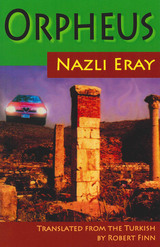
Robert Finn's translation of Turkish author Nazli Eray's Orphée makes available to the English-language reader a rewriting of the myth from the perspective of Eurydice, the wife of Orpheus. Eray's surrealistic version takes place in a hot resort town in contemporary Turkey. The setting of an archaeological dig gives a connection to the past and literally to the underworld. Found in the dig is a statue of the Roman emperor Hadrian, who proceeds to offer an unusual perspective on modern life and values through mysterious letters carried by a messenger pigeon. Eray also comments on modernity, as the city of Ankara emerges as a character in the novel's fantasy. Set in junta-ruled Turkey of the 1980s, the novel takes its place as a crucial slice of Turkish literary history.
Resonating with haunting references to the film Last Tango in Paris, the novel evolves as a mystery story with a humorous bent. Thus Eray illuminates her insatiable curiosity about other cultures, particularly those of the West. Finally, the style of the translation is simple and clear, with crisp dialogue. Sibel Erol, professor of Turkish literature at New York University, has written an introduction that places this fantastic plot in a literary context, as well as in understandable terms that relate to the reality of today's Turkey.
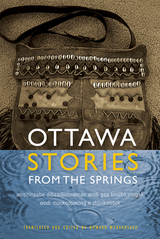
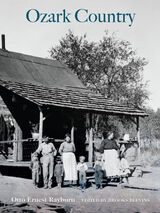
Published just days before America’s entry into World War II, Ozark Country is Otto Ernest Rayburn’s love letter to his adopted region. One of several chronicles of the Ozarks that garnered national attention during the Depression and war years, when many Americans craved stories about people and places seemingly untouched by the difficulties of the times, Rayburn’s colorful tour takes readers from the fictional village of Woodville into the backcountry of a region teeming with storytellers, ballad singers, superstitions, and home remedies.
Rayburn’s tales—fantastical, fun, and unapologetically romantic—portray a world that had already nearly disappeared by the time they were written. Yet Rayburn’s depiction of the Ozarks resonates with notions of the region that have persisted in the American consciousness ever since.
READERS
Browse our collection.
PUBLISHERS
See BiblioVault's publisher services.
STUDENT SERVICES
Files for college accessibility offices.
UChicago Accessibility Resources
home | accessibility | search | about | contact us
BiblioVault ® 2001 - 2024
The University of Chicago Press









